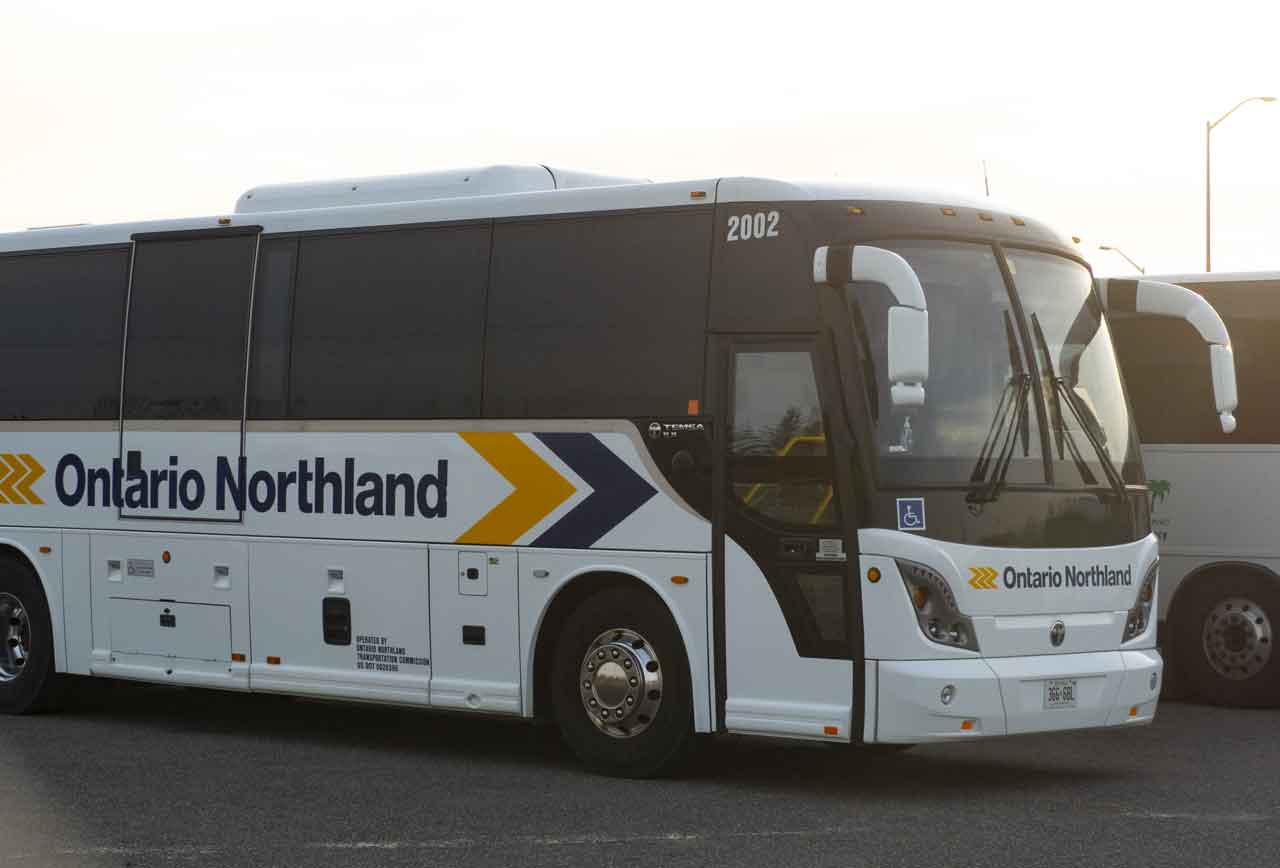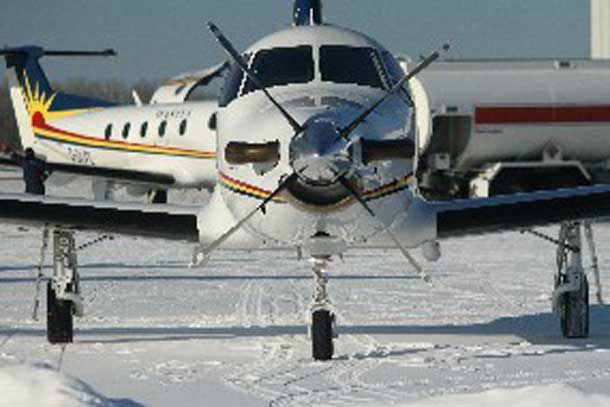THUNDER BAY – The transportation sector locally, nationally and globally has been hammered very hard by the COVID-19 pandemic. The truth is that even as the economy starts to rebound from coronavirus the transportation sector is still going to be hit very hard and for a long time into the future.
Aviation Sector Billions in Losses
WestJet and Air Canada are both announcing layoffs Porter Airlines has suspended flights into July. Greyhound Canada and Kasper Transportation’s bus companies have both suspended routes in Ontario.
Air Canada CEO Calin Rovinescu says, “We are now living through the darkest period ever in the history of commercial aviation. “No adjectives can adequately describe the pandemic’s effect upon our economy. The numbers fully quantify the extent of the financial devastation the global airline industry is experiencing.
“For Air Canada, the pandemic and government-imposed travel restrictions have ended a run of 20 Seven consecutive quarters of revenue growth. Our solid January and February results despite early weakness in China gave us every encouragement that this performance would continue until the sudden and catastrophic onset of COVID-19 in Europe and North America in early March.”
The Air Canada CEO says that travel numbers were down to five per cent of what they were before COVID-19.
According to SimpliFlying CEO and founder Shashank Nigam, “9/11 changed travel completely with added security checks and longer check-in times. The impact of COVID-19 on air travel will be even more far-reaching.”
Globally the airline industry is projecting losses in the $US364 billion range.
Porter Airlines temporarily suspended all flights on March 21, to support the public health response to COVID-19, and as travel restrictions and personal movement limitations were increasing. The majority of Porter’s 1,500 team members received temporary layoff notices at that time, with a small group maintaining business continuity.
“Our team is showing outstanding dedication during a time when most are unable to work,” said Michael Deluce, president and CEO, Porter Airlines. “As we look ahead to restarting flights when it is appropriate to do so, we are doing everything possible to stay connected with our people. The ability to use CEWS is one way of doing this. We appreciate the federal government’s support in this regard.”
Porter Airlines is now hoping to fly again at the end of June.
Bus Transportation Hit Hard
Greyhound Canada and Kasper Transportation have suspended operations due to COVIS-19. Low if none existent passenger numbers forced those companies to close down due to COVID-19.
There is an apparent bright spot, in Ontario. Ontario Northland Transportation has started its route expansion into Northwestern Ontario.
Now Ontario Northland transportation has expanded its route even though many routes for the company have been curtailed by expansion into northwestern Ontario right through to Winnipeg. The first bus from White River to Thunder Bay arrived this past Sunday. There was one passenger on board for that first trip.

Kasper Wabinski of Thunder Bay-based Kasper Transportation is looking for help to get back in the game. “Like many other businesses we are facing challenges in the COVID-19 era. Kasper Transportation is going to have to redesign our schedules and routes to align with Ontario Northland transportation other bus companies and work towards restarting our operations in a post-COVID-19 era. We also realized that the transition and transportation just going to take some time it’s going to be fairly slow to come back to a level like before the pandemic.”
Thunder Bay-Superior North MP Patty Hajdu states, “Understanding the economic challenges facing businesses, the federal government has provided comprehensive support in the form of the Canada Wage Subsidy, Canada Emergency Business Account and the Business Credit Availability Program. These supports and others are open to the transportation sector. In addition to the current supports being offered, the federal government also provided support to address the discontinuation of Greyhound services through a cost-sharing program with the affected provinces.”
Thunder Bay-Rainy River MP Marcus Powlowski says, “I agree that the survival of this company is important for Northern Ontario and that it provides a semi-essential service including bringing a lot of patients to their medical appointments and transporting blood and water samples. Furthermore, people with limited incomes may be dependent on the bus in order to get out of small isolated towns, for example, a woman in an abusive relationship. So again I want this company to get through this.
“I have been in talks with my colleagues as to how we can help out this company. I am hoping the province is also doing what it can as well.”
With social distancing, the norm for the foreseeable future transportation is going to be impacted by having fewer people available to ride on buses aircraft and trains.
For example, Reuters is reporting, “In London, transport bosses are boosting train and bus services, which were cut back during lockdown, but have warned they will only be able to safely carry 13-15% of normal passenger numbers.”
As the economy starts to open up it is going to be very important that the transportation sector is properly supported.
There are unique situations for transportation companies. The costs of leasing vehicles buses and airplanes maintenance of those vehicles and insurance all provide fixed set costs that the current subsidy’s for wages and building rent have not covered.
If you go on FlightAware on NetNewsLedger you will see that there are very few aircraft overhead in Canada and what are overhead are mostly freight aircraft.
The trucking industry had challenges early on during the COVID-19 pandemic. Supporting that industry means that we have food and the goods that we need to be brought to our homes via the stores in our communities.
VIA Rail has further suspended operations for the famous Canadian run, and for many of its other commuter runs in southern Ontario.
Buses, trains and airplanes are all going to be needed as this pandemic slowly winds down. Finding ways to keep these companies not only alive but giving them the opportunity to thrive is going to take a lot of support.
Right now, there are guidelines from the Federal Government for aviation, rail, marine and road transportation. Here in Thunder Bay, with Thunder Bay Transit loading from the rear door is an example of how those rules are being followed.
For a bus, train, or plane, the social distancing requirements put in place restrictions that as we are seeing are likely to be in place until there is a vaccine for COVID-19 are effectively making it almost impossible for transportation companies to operate profitably.

Here in Thunder Bay, seeing the Ontario Northland buses rolling into town, and west into Kenora and then Winnipeg is a positive part of the equation. The Ontario government-owned transportation company has been talking about expanding into Northwestern Ontario for a long time.
Passenger Rail service has been hit hard too. VIA Rail has suspended services on almost all the company’s routes. There are many who have sought that passenger rail return to Thunder Bay. It is at this time hard to see the railway expanding service, but time will tell.
It is difficult to foresee how all of the safety changes that are likely to be needed in the industry is going to impact not only the cost of transportation but the economic viability of the transportation sector.
The hardest hit in the short and long run is likely to be aviation. Industry experts are already forecasting longer times needed for check-in to sanitize baggage and check passengers. It is possible in the near future the need for more buses, and more trains could be a solution.
Under COVID-19 right now, it is really hard to say what will happen. Think of it this way, on January 1, 2020, would any of us have thought this year would be like it has been?
With the private sector struggling, the real question is how long will it take before the federal or provincial government, along with the banks be forced to take steps to stabilize the transportation industry in Canada.
COVID-19 may kill off parts of Canada’s transportation sector. It also likely will leave many parts of the industry facing completely new realities. For passengers on buses, trains and airplanes, it is likely higher costs, and less service is the likely scenario for some time to come.







